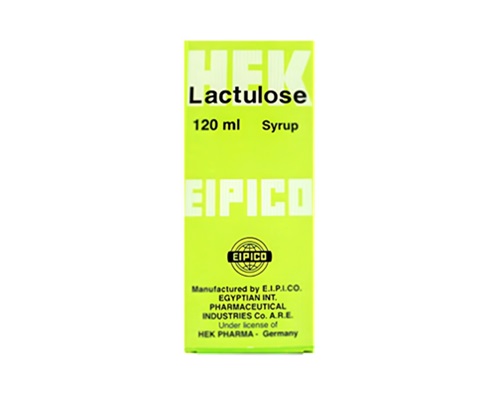Description
Trade name:
Lactulose
Compound:
Each 100 ml of syrup contains:
Lactulose 67 g.
Properties:
Laxative. Lactulose is a disaccharide consisting of galactose and fructose, is not hydrolyzed by disaccharidases of the small intestinal mucosa. It has a hyperosmotic laxative effect, stimulates intestinal peristalsis, improves the absorption of phosphates and calcium salts, and promotes the excretion of ammonium ions.
Lactulose as a prebiotic substance enhances the growth of beneficial bacteria such as bifidobacteria and lactobacilli, while it becomes possible to suppress the growth of potentially pathogenic bacteria such as Clostridium spp. and Escherichia coli, which ensures a more favorable balance of intestinal flora.
Indications:
-Hyperammonemia due to liver disease
– Hepatic coma
– Chronic constipation
– Dysbacteriosis (due to Salmonella carriage or after antibiotic treatment)
-Periodontoid diseases.
Method of administration and dosage:
For liver diseases: 2-3 tablespoons 3 times a day
Chronic constipation:
Adults – 1-3 tablespoons per day.
Children – 2-4 teaspoons per day
Dysbacteriosis:
Adults – 1-2 tablespoons per day.
Children – 2-4 teaspoons per day
Periodontal diseases:
Adults – 1-2 tablespoons per day
Children – 2-4 teaspoons per day.
Contraindications:
Fructose and galactose intolerance. Intestinal obstruction.
Precautions:
Should not be used for abdominal pain, nausea, vomiting without verification of the diagnosis.
Should not be used in cases of inflammatory diseases of the gastrointestinal tract in the acute stage, as well as in cases of water-electrolyte metabolism disorders.
Use with caution in patients with gastrocardial syndrome. In such cases, treatment should be started with low doses and increased gradually to avoid the development of flatulence.
Use with caution in patients with diabetes mellitus, especially in cases of inflammatory lesions of the colon.
During long-term treatment (more than 6 months), the level of potassium, chlorine and carbon dioxide in the blood plasma should be regularly monitored. During therapy with laxatives, it is recommended to drink a sufficient amount of liquid (1.5-2 l/day, which corresponds to 6-8 glasses of 250 ml).
Side effects:
At the beginning of treatment, diarrhea and flatulence may occur, to prevent which it is necessary to prescribe the drug initially in smaller doses with a gradual increase.
Storage method:
Store at temperatures not exceeding 30 degrees.
Package:
The cardboard box contains paper instructions and a glass bottle with 120 ml syrup.







